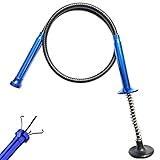How To Dispose Of Used Car Parts
Need to get rid of old car parts? This guide will walk you through how to dispose of used car parts safely and responsibly, covering everything from tires to batteries. You’ll learn about different disposal methods, recycling options, and legal considerations.
We’ve all been there –
a broken headlight, a rusty bumper, a worn-out tire. These used car parts often end up cluttering garages and driveways. But simply tossing them in the trash isn’t the best approach. Many car parts contain hazardous materials like lead, mercury, and various oils. Improper disposal contaminates landfills, pollutes soil and water, and can harm wildlife. Responsible disposal, therefore, isn’t just about tidying up; it’s about protecting the environment and public health. Think of it like this: an improperly disposed-of car battery can leak acid into the ground, harming plant life and potentially contaminating groundwater sources. This is why understanding the proper disposal methods for different car parts is crucial. In fact, many states and municipalities have specific regulations concerning the disposal of auto parts to mitigate environmental hazards. Ignoring these regulations can result in hefty fines.
Types of Car Parts and Their Disposal Methods
Car parts are diverse, ranging from simple plastic components to complex electronic systems. Each requires a specific disposal method. For example, tires are often recycled or repurposed into various products, while fluids like motor oil need to be collected at designated recycling centers. Metallic parts like steel and aluminum can be easily recycled through scrap metal yards. More complex parts, such as catalytic converters, contain precious metals like platinum, palladium, and rhodium, and have a high recycling value. Knowing what kind of materials a part is composed of is the key to finding the most appropriate disposal method. This can often be determined by looking for recycling symbols or by checking online resources dedicated to car part composition. Ignoring these differences can lead to wasted resources and potential environmental damage.
Legal and Regulatory Considerations
Depending on your location (state, county, or even municipality), specific laws and regulations govern the disposal of used car parts. Some areas might have designated drop-off locations for specific hazardous materials, like batteries or antifreeze. Others might have stricter rules on disposing of tires or large metal parts. Checking with your local waste management authority is essential. Failure to comply with local regulations could lead to fines or penalties. Resources like your state’s Department of Environmental Quality (or equivalent) website is an excellent place to start your research. They can provide details on acceptable disposal methods and often list authorized recycling centers or collection sites for specific materials. Always err on the side of caution and ensure you understand the local regulations before disposing of any used car parts.
Recycling and Repurposing Car Parts
The Benefits of Recycling and Repurposing
Recycling and repurposing used car parts offer numerous environmental and economic benefits. Recycling conserves natural resources by reducing the need to extract new materials. This process diminishes the environmental impact associated with mining and refining. Furthermore, repurposing old parts gives them a new life, extending their lifespan and reducing waste. For instance, a used engine, after proper inspection and refurbishment, can find a new home in another vehicle, extending its useful life considerably. This decreases the demand for new car manufacturing, lessening the overall environmental footprint. The economic benefits are equally significant. Recycling certain metals, such as those found in catalytic converters, can yield substantial returns due to their high market value.
Where to Recycle or Repurpose Car Parts
Several avenues exist for recycling and repurposing car parts. Auto part retailers or salvage yards often accept used parts. Some even pay for specific components, like catalytic converters or scrap metal. You can also find local scrap metal yards that will purchase your used metal parts. For fluids like motor oil, antifreeze, and brake fluid, you’ll typically find designated collection centers at auto parts stores or specific recycling facilities. Online marketplaces and forums can be useful for finding buyers for parts that are still functional, giving them a second life. Remember to check local regulations and the specific requirements of these recycling facilities before dropping off your used car parts. Some facilities might have specific processing methods, hours of operation, and acceptable materials.
Maximizing the Value of Your Used Parts
Before disposing of your used car parts, consider their potential value. Some parts, especially those in good condition, can be sold online or to local salvage yards. Clean parts, well-documented with photos, often fetch better prices. Take high-quality photographs of the parts from multiple angles, highlighting any unique features or markings. Provide a clear and accurate description, emphasizing the condition and functionality. Consider testing parts before sale to ensure functionality. This transparency builds trust and helps maximize your return. Remember, even parts that are not completely functional might have salvageable components or materials, such as usable metal that can be easily recycled.
Disposing of Hazardous Car Parts
Handling Hazardous Materials Safely
Certain car parts contain hazardous materials that require special handling. Batteries, for example, contain corrosive acids and heavy metals that can contaminate soil and water if not disposed of correctly. Fluids like motor oil, transmission fluid, antifreeze, and brake fluid are also hazardous and should be handled with care. Always wear appropriate protective gear, such as gloves and eye protection, when handling these materials. Never mix different fluids, and always use properly sealed containers to prevent spills. Improper handling can lead to health problems, environmental damage, and potential legal repercussions.
Proper Disposal of Batteries
Car batteries contain lead, sulfuric acid, and other hazardous chemicals. Never throw them in the trash. Most auto parts stores and battery retailers accept used batteries for recycling, often at no cost. Some municipalities also have designated drop-off locations for battery recycling. Take advantage of these resources to ensure environmentally sound disposal. Recycling batteries conserves valuable resources and prevents environmental contamination. Often, the battery retailer will offer a credit or discount towards the purchase of a new battery if you return the old one. This is an incentive that makes proper disposal both convenient and potentially cost-effective.
Disposing of Fluids
Used motor oil, transmission fluid, antifreeze, and brake fluid should never be poured down the drain or onto the ground. These fluids can contaminate water supplies and harm wildlife. Auto parts stores and many recycling centers accept used fluids for recycling or proper disposal. Some jurisdictions even offer dedicated collection days for hazardous waste, where you can safely dispose of these materials free of charge. Ensure that containers are securely sealed to prevent leakage during transport. When storing used fluids before disposal, choose a well-ventilated area, away from sources of ignition.
Dealing with Tires and Other Large Parts
Proper Disposal of Tires
Tires are a significant waste product, and many jurisdictions have specific regulations for their disposal. Do not simply leave them by the curb or in a landfill. Check with your local waste management authority about proper disposal methods. Many tire retailers accept used tires for recycling or disposal. Some municipalities also organize tire collection events periodically. Tire recycling often involves shredding and repurposing the rubber for various applications. This process reduces landfill waste and conserves resources.
Disposing of Large Metal Parts
Large metal parts, such as bumpers, fenders, and engine blocks, can be recycled at scrap metal yards. These yards often pay for scrap metal, making recycling a financially beneficial option. Before taking your metal parts to a scrap yard, clean off any hazardous materials, such as fluids or paint. This helps improve the efficiency of the recycling process and potentially increases the scrap metal’s value. It’s also important to ensure the scrap yard adheres to environmental regulations, handling the metal safely and reducing pollution.
Handling Other Bulky Car Parts
Other bulky car parts, such as seats, carpets, and interior panels, can be difficult to dispose of. Consider donating usable parts to charities or automotive schools. If they are beyond repair, you’ll typically have to find a local landfill that accepts this type of waste. Confirm with the landfill beforehand about any restrictions or fees associated with disposal. Contacting your local waste management department is an excellent way to receive information about suitable disposal methods for unusual or bulky car parts. They can offer advice or even schedule a pick-up, depending on their service offerings.
Using Online Resources and Local Services
Finding Local Recycling Centers
Online search engines can help you locate nearby recycling centers that accept various car parts. Many websites list recycling centers by material type, making it easy to find suitable locations. Government websites, such as those of your state’s Department of Environmental Quality, can provide valuable information about local recycling programs and regulations. You can often filter these resources by the specific type of car part you need to dispose of, ensuring a quick and easy search.
Utilizing Online Marketplaces
Online marketplaces, such as eBay or Craigslist, can be used to sell or give away used car parts in good working condition. This helps keep parts out of landfills and provides a potential source of income. Make sure to accurately describe the condition of the parts and clearly state any defects or limitations. Be honest and upfront about the parts’ functionality to avoid disputes. You’ll increase your chances of making a successful sale and helping the buyer get value out of the part.
Contacting Your Local Waste Management Authority
When in doubt, always contact your local waste management authority for guidance. They are the primary source of information on local regulations and acceptable disposal methods. They can help you determine the best way to dispose of your used car parts while complying with local laws and environmental standards. They can often answer specific questions regarding acceptable materials, disposal methods, scheduling of collection services, or provide addresses for authorized drop-off locations.
The Role of Salvage Yards in Recycling
Salvage Yards: A Key Player in Car Part Recycling
Salvage yards play a significant role in recycling car parts. They collect and process used car parts, separating reusable components from those needing disposal or recycling. They are a critical part of the circular economy for the automotive industry. They act as both a source of used car parts for consumers seeking cheaper alternatives and as a place to properly dispose of unwanted parts. By offering a place for individuals to hand off used parts, they actively take part in keeping parts out of landfills.
How Salvage Yards Handle Used Parts
Salvage yards typically assess the condition of incoming parts. Those in good working order are cleaned, inspected, and cataloged for resale. Others are disassembled for valuable components, or sent to be recycled appropriately. Salvage yards also handle the safe disposal of hazardous materials, in line with environmental regulations. They often have specialized processes for disposing of fluids, batteries, and other hazardous materials, ensuring the safety of their workers and the protection of the environment. These practices reduce waste, conserve resources, and help protect the environment.
Finding Reputable Salvage Yards
When choosing a salvage yard, it’s crucial to select a reputable one that adheres to environmental regulations. Look for yards with a strong commitment to responsible recycling and disposal practices. Ask about their processes for handling hazardous materials and their methods for recycling or repurposing various car parts. Reputable salvage yards will be transparent about their operations, providing information about their recycling processes and disposal procedures. This transparency is a good indication of their commitment to environmental sustainability.
Reducing the Need to Dispose of Car Parts
Preventive Maintenance
Regular maintenance can extend the lifespan of your car parts, reducing the need for replacements and disposal. Keeping your vehicle well-maintained and performing routine checks helps prevent premature wear and tear. Regular oil changes, timely inspections, and addressing issues early on can significantly extend the life of your car parts, reducing the frequency with which you need to dispose of them.
Repair Instead of Replace
Whenever possible, repair rather than replace broken parts. Minor repairs can often restore a part to functionality, avoiding the need for disposal. Many automotive repairs require only relatively small investments in tools and parts, making them very cost effective. This not only saves money but also helps reduce waste. With this approach, even damaged parts may be repurposed through repair.
Choosing Durable and Sustainable Parts
When you do need to replace car parts, choose durable and sustainable options. Parts made from recycled materials or designed for longer lifespans reduce waste in the long run. Though they might have a slightly higher initial cost, they represent a worthwhile investment that reduces waste and saves you money in the long run, reducing the overall cost of ownership. In the long run, these parts will require replacement less often, saving you money and reducing your waste.
Frequently Asked Questions
What is the best way to dispose of used car batteries?
Never throw car batteries in the trash! They contain hazardous materials. Take them to an auto parts store, battery retailer, or designated recycling center. Many will even offer a credit or discount on a new battery when you return your old one. Learn more about responsible battery recycling in your area.
How do I dispose of used motor oil?
Used motor oil is hazardous waste and should never be poured down the drain or into the ground. Most auto parts stores and recycling centers accept used motor oil. Check your local regulations for specific instructions and collection points. Learn more about proper motor oil disposal and recycling options.
Where can I recycle old tires?
Many tire retailers and municipalities have programs for tire recycling. Check with your local waste management authority or tire shops for details on drop-off locations and programs. Learn more about tire recycling initiatives in your community.
What should I do with broken car parts?
If the parts are still usable, consider selling or donating them. Otherwise, check with your local waste management facility to determine proper disposal methods. Some materials can be recycled at scrap metal yards, while others may need to go to landfills. Learn more about recycling options for various car parts.
Are there any fees associated with disposing of used car parts?
Fees vary depending on your location and the type of parts. Some recycling centers offer free services, while others might charge based on the type and quantity of waste. Check with your local waste management authority or recycling centers for specific details on fees. Learn more about the cost of disposing of car parts in your area.
Can I just throw used car parts in the trash?
Generally, no. Many car parts contain hazardous materials, and improper disposal can result in environmental damage and potential fines. Always check local regulations and utilize designated recycling or disposal methods. Learn more about the legal aspects of disposing of car parts.
What happens to recycled car parts?
Recycled car parts undergo various processes depending on the material. Metals are typically smelted and reused in new products. Plastics can be processed and used in other applications. The goal is to recover valuable materials and reduce landfill waste. Learn more about the car part recycling process.
Final Thoughts
Disposing of used car parts responsibly is crucial for environmental protection and public health. This guide has covered several methods, from recycling at designated centers to repurposing usable parts. By understanding the specific requirements of your local area and the different types of car parts, you can make informed choices and contribute to a greener future. Remember, always check local regulations, use designated disposal facilities when handling hazardous materials, and consider selling or donating usable parts before resorting to disposal. Let’s all work together to ensure responsible and environmentally sound management of used car parts!

David Peterson, the chief editor of sparepartscare. I am an automobile engineer and assign to an local firm with much experience in automobile equipment. During the time, most of my experience is related to the Industry of cars parts. I learned about the thing, when working with experienced inspectors, one must be as good as the inspector, or better, with knowledge of the project as well as the practical aspects of automobile industry.








